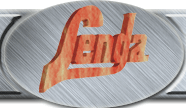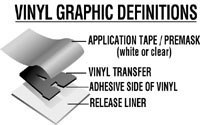Due to an increased
usage of silicone based additives in automotive paint that traditionally
contained only solvents or oil derivatives, the pressure-sensitive graphics
industry is facing adhesion problems. The result of these changes is the
need for increased awareness towards cleaning and surface preparation methods.
To reduce the amount of
solvents in some of the newer "heavy solids" paint and clearcoat products,
silicone-based additives are used as flow agents. As the solvents evaporate
during the curing process, silicone particles migrate to the surface,
leaving a silicone residue. In fiberglass manufacturing, mold release
agents may also leave a silicone residue.
Traditional surface preparation
for graphics application has consisted of chemical washing. Most cleaners
contain a hydroxyl compound (acetone, alcohol) or a petroleum base (kerosene,
zylene) solvent. These solvents work by dissolving oil-based impurities
that are on the surface.
Silicone, however, does
not dissolve. Removal of siliconates occurs through emulsification (suspension
of small globules within the liquid, like oil in water). Soap and water
will generally outperform solvent for silicone emulsification. However, an
extra wash process costs applicator time and it may not always be necessary.
Each application is unique.
We need to be aware that the substrates and chemicals are evolving, and
must compensate by adjusting our application processes.
|

 Position Graphic in desired position on smooth clean wax free surface.
Tape if neccesary
Position Graphic in desired position on smooth clean wax free surface.
Tape if neccesary Squeegee out from the center of the graphic towards the outside. Making
sure not to trap any air.
Squeegee out from the center of the graphic towards the outside. Making
sure not to trap any air. Remove the mask and you're done. Multi-Color jobs are already
together.
Remove the mask and you're done. Multi-Color jobs are already
together.